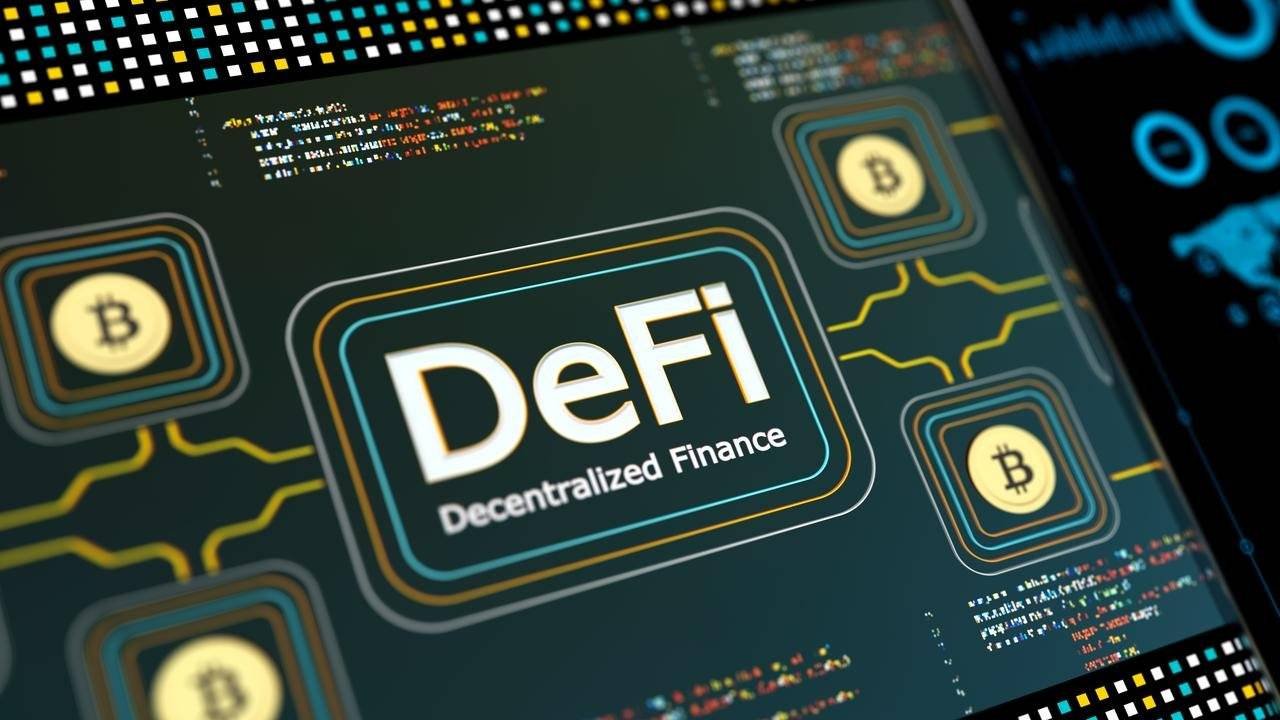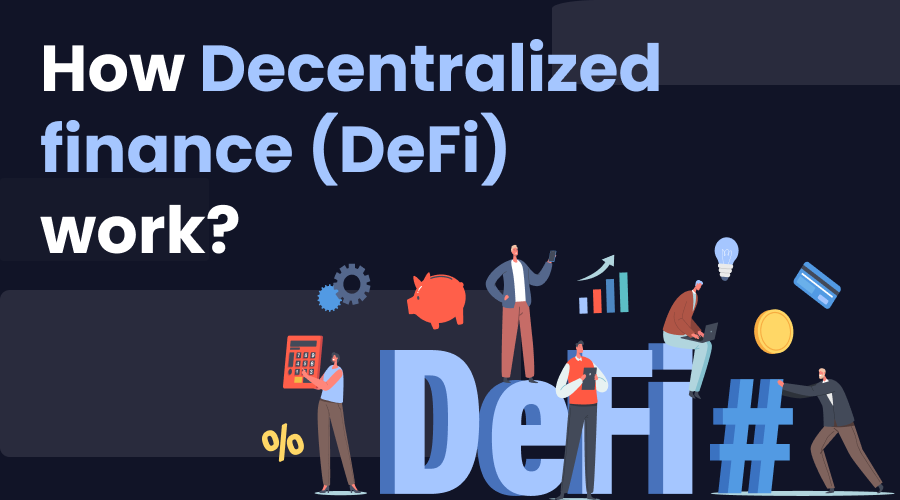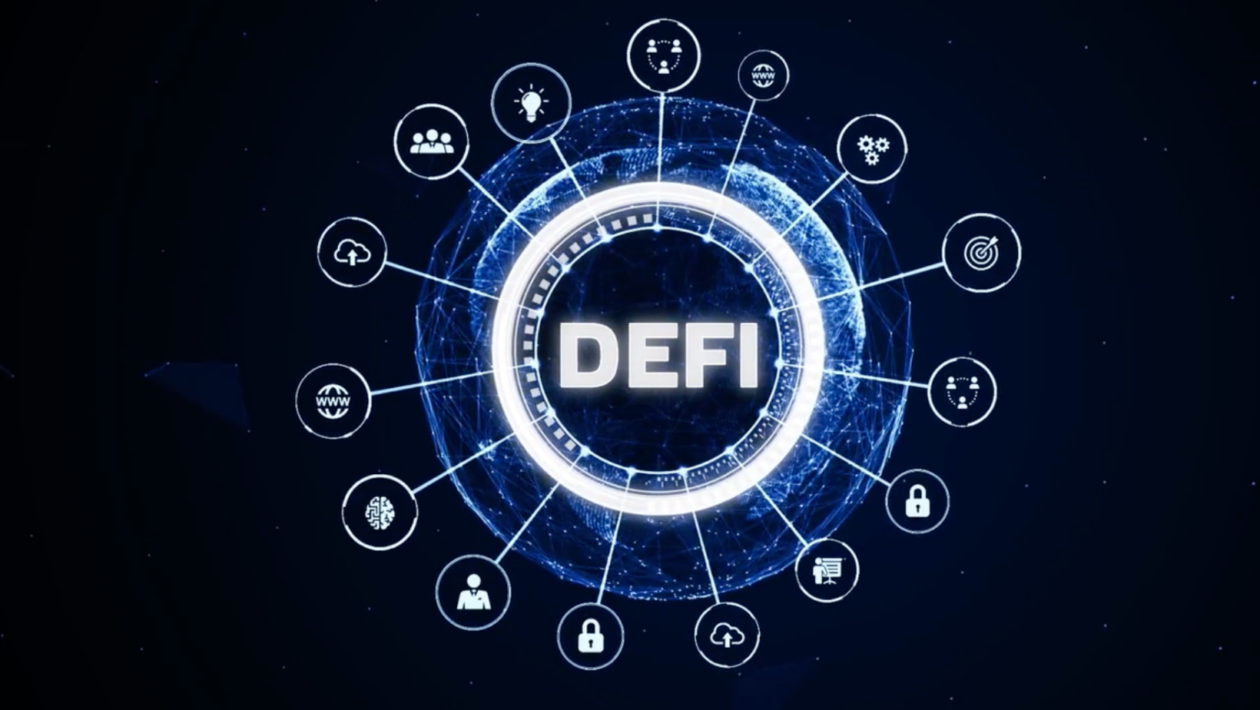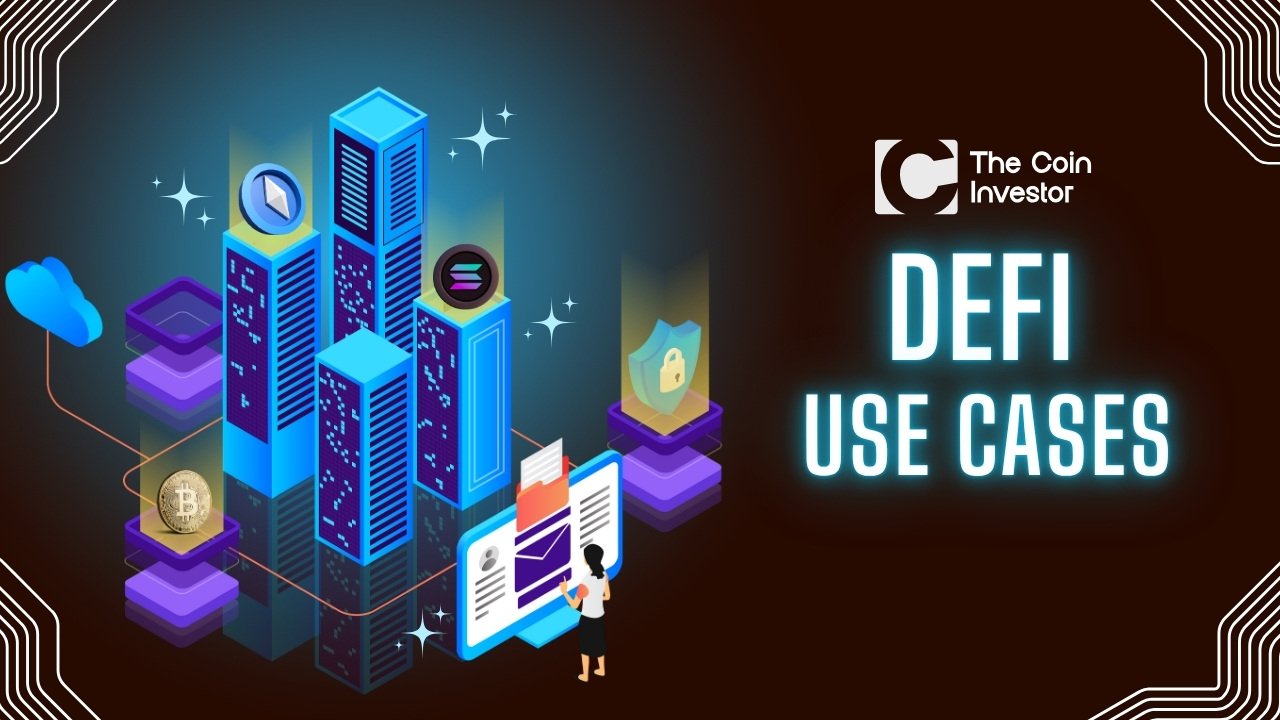The DeFi movement has changed how market participants manage money around the world. It uses blockchain tech and smart contracts. This creates direct networks that avoid old finance systems.
By cutting out middlemen, DeFi allows for self-run money markets and prediction markets. It also supports complex finance tasks on shared ledgers like Ethereum.
This change gives users open access to services like yield farming and DAOs. These services can be found on the internet using crypto money.
DeFi has grown quickly, with more than $100 billion in total value locked. This shows many people now use these new options instead of traditional exchanges. What began as simple token swaps is now a mix of advanced finance tools. These tools have lower fees and do not need third-party help. Users now rely on smart contracts for things like liquidity mining, asset tokenization, and trading derivatives.
This change makes DeFi more than just a tech upgrade. It rethinks how we handle finance. It also gives users better control over their digital assets through clear rules set by code.
What Is Decentralized Finance (DeFi)?

Decentralized finance, or DeFi, is a new way to manage money. It uses blockchain technology to offer services that are clear and easy to access.
DeFi platforms use smart contracts to make things happen automatically. This means there is no need for traditional banks or other third parties and middlemen.
These services are available all day and night. Users can always access financial products without waiting for business hours.
DeFi relies on a system that keeps records of transactions on public blockchains. These records are checked by other users in the network. This makes the system clear and allows everyone to join equally.
Users keep control of their own private keys and assets. No central authority can limit access based on location or income level.
What Are the Benefits of Decentralized Finance?
The DeFi system has many benefits over regular finance.
First, it allows anyone to join with permissionless access, without needing special permission. Anyone with internet can access services from anywhere. This opens up finance to many people who could not use it before.
Another big plus is transparency.
All deals happen on public blockchains that anyone can check. Smart contracts help by doing tasks based on set rules, so no middleman is needed. DeFi platforms usually offer better interest rates for people saving money and lower costs for loans than banks.
The mixing of DeFi tools helps new ideas grow by letting builders combine tools in smart ways. This “money lego” idea makes new products that regular finance cannot create.
Also, users keep control of their digital assets with private keys. This lowers the risk of losing assets due to banks or other central groups.
DeFi Use Cases in Real-World

1. Decentralized Lending and Borrowing Platforms
Decentralized lending protocols are important in DeFi. They let users lend crypto and earn interest. This is done without middlemen. These platforms use smart contracts to create autonomous money markets and make lending easier. They set interest rates based on supply and demand. This is better than using centralized choices. Borrowers can get funds right away by giving collateral. Often, they need to over-collateralize to keep liquidity safe.
Platforms like Aave show how decentralized lending on the Ethereum blockchain works well. They offer good interest rates and ensure safety through automation. The protocol changes rates based on usage, which helps create fair market prices. It removes the need for credit checks and long approvals. This makes it easier for people without banks worldwide to access funds.
2. Decentralized Exchanges (DEXs)
Decentralized exchanges, or DEXs, are cryptocurrency exchanges that allow people to trade digital assets. They do this without using old platforms or order books. DEXs use automated market makers and liquidity pools. This setup allows for constant trading. Liquidity providers can earn fees from transactions. Unlike centralized exchanges, DEXs let traders keep their private keys safe.
The automated market maker model uses simple math to set prices. It does this based on asset ratios in liquidity pools. This helps with trading all day, every day. It also cuts down the need for market makers. This new way of trading lowers fees compared to traditional exchanges. As a result, more people can trade often without high costs.
3. Stablecoins for Daily Transactions
Stablecoins are very important for payments that happen all day, every day. They help with over $2 trillion in trades in just 30 days. This is more than many old payment systems. Stablecoins tie their value to real fiat currency money. This helps keep prices steady. Because of this, they are great for daily use.
More people are using them for cross-border payments. There is often more use on weekends than on weekdays. Stablecoins connect regular finance to the DeFi world. This lets users enjoy decentralized services without worrying about price volatility and price changes.
4. Yield Farming and Liquidity Mining
Yield farming is a common way for users to earn money. They do this by adding funds to DeFi systems. Users put crypto coins into liquidity pools. In return, they get tokens as rewards. This helps them earn passive income while also aiding the system’s work. Yield farming is key to the DeFi world.
Many platforms offer good yearly returns to draw in fund providers. Liquidity mining programs encourage users to take part. They give out governance tokens to early users. These tokens allow them to vote in decentralized groups called DAOs. This gives users a say in how the platform grows. The mix of yield farming and voting helps keep users involved and benefits both sides.
5. Staking for Passive Income
Staking helps users earn money by locking up their crypto for safety. New liquid staking methods let users keep their assets while they earn rewards. These methods provide token versions of the staked assets for DeFi use. This improves how effectively capital is used and strengthens blockchain safety.
Platforms like Lido Finance show how liquid staking opens new DeFi chances. Users can stake Ethereum and get stETH tokens. These tokens stay liquid and can be used as collateral in lending or liquidity pools. This way, users can make multiple income sources from just one asset.
6. Cross-Border Payments with Minimal Fees
DeFi can help with payments between countries. It saves a lot of money compared to old finance ways. Some DeFi methods cut transaction fees by 60-80%. They also follow rules to stop crime and verify customers. These systems allow fast transfers, so there are no long waits or extra fees like banks have.
The speed comes from removing middlemen and using smart contracts to automate tasks. DeFi tools work all day, every day. This helps businesses and people in growing markets that need better payment options across borders.
7. Decentralized Insurance Solutions
DeFi insurance platforms help digital asset owners manage their risks. They protect against smart contract failures, exchange hacks, and other risks. These platforms use a method called distributed risk pooling. This means users can add to insurance funds and share costs and claims. Smart contracts help process claims automatically. This cuts down on costs and delays for users.
The decentralized setup makes things clear and reduces the need for central control. Users can check fund reserves and claim histories online. Also, DeFi insurance pools work worldwide. This gives better rates and wider coverage than local markets do.
8. Asset Management Protocols
DeFi asset management platforms make managing assets easier with smart contracts. They remove the need for old fund managers. These platforms use new methods to boost returns across many DeFi systems. They change portfolios based on market changes and interest rates.
Users can access advanced ways of investing that were once only for big investors, including margin trading. By using DeFi rules, these platforms provide full lending, borrowing, and trading options. For example, Yearn Finance shows how smart contracts can manage funds well for better earnings. This lets users maximize profits without much work. This automation opens up high-quality asset management services to everyone.
9. Prediction Markets and Forecasting
Prediction markets let people guess future events, including things like elections and election results, as well as sports games. They use shared knowledge to predict results. Smart contracts help with payments based on real outcomes. This adds clarity and security to the process. Their open design cuts down on censorship risks. It also encourages people from around the world to join in.
Recent growth shows their value in data analysis and risk checks. Platforms like Polymarket let users buy shares that show event chances. This helps companies manage risk and make good decisions.
10. Decentralized Autonomous Organizations (DAOs)
Decentralized autonomous organizations, or DAOs, offer a new way to govern. Token holders can vote on choices using smart contracts. This system replaces old hierarchies with a fairer method. DAOs take care of managing funds and forming partnerships.
They also ensure that treasury management is clear and open. In DeFi, DAOs focus on skills and shared goals. Examples include Uniswap DAO and MakerDAO. These groups show how to use complex finance tools while staying decentralized. Token holders can affect upgrades, fees, and new features.
11. Tokenized Real-World Assets
Asset tokenization platforms change real estate, art, and other physical items into digital tokens that can be traded. This opens up chances for shared ownership. It also makes it easier to sell assets that are usually hard to sell. Blockchain keeps clear records of who owns what. It also helps in sending payments to token holders.
By expanding DeFi to more than just digital assets, tokenization connects regular finance and new systems. Platforms like Polymath help make security tokens. These tokens show ownership in real estate or private equity investments. This allows smaller investors to have access to a mix of investments that were once just for big firms.
12. On-Chain Identity and Credit Scoring
DeFi systems are making new ways to manage identity. They allow credit scoring using on-chain transaction records. This is different from old methods. These systems look at wallet use, payment history, and actions in protocols. They decide if someone can get credit without needing personal data.
Smart contracts can change loan terms based on a borrower’s score from blockchain use. This helps include people who lack traditional credit histories. It also keeps user privacy and safety intact. Users can build their reputation by acting responsibly and paying on time. They create credit profiles that work across many DeFi platforms. The clear nature of blockchain helps ensure scores show real financial actions.
13. Savings and Interest Accounts
DeFi savings platforms offer good interest rates on digital asset deposits. These rates often beat those of regular banks.
The platforms use smart systems to find the best ways to earn money. Users can earn extra interest and still access their funds easily. They can withdraw money right away, with no fees or waiting times like in normal banks.
Some platforms make saving fun by adding audited savings games that are checked for safety. This keeps users engaged while making sure their money is safe through audits of smart contracts. It also gives clear access to how funds are managed.
14. NFT-Based Financial Products
Non-fungible tokens, or NFTs, have grown beyond just digital art. They now include loans backed by NFTs and shared ownership plans. Users can use their NFT collections as security to get cash from assets that are hard to sell.
By breaking up NFTs into parts, many people can own bits of high-value tokens. This opens up new ways to invest in these items.
These money tools show how flexible blockchain is for making new asset types and funding ways. Smart contracts help run NFT-backed loans automatically.
They also manage what happens if someone can’t pay back the loan, helping digital collectibles and online assets enter credit markets.
How Decentralized Finance (DeFi) Works?

DeFi protocols work using smart contracts on blockchain networks. Most of these are on Ethereum. These contracts run by themselves and follow set rules. This means no need for people in the middle. It also ensures true decentralization.
DeFi platforms have different layers. These include token standards, exchanges, loans, and derivatives. Users connect to these platforms through websites linked to their wallets. They keep control over their digital assets without needing third-party help.
All transactions get recorded on the blockchain. This creates a clear record that everyone can see. Smart contracts handle lending terms and calculate interest rates. They also give rewards based on rules in the code. This lowers costs and cuts down on mistakes or bias seen in traditional finance. Anyone with internet can use DeFi services, no matter where they are or who they are.
Advanced Applications and Innovations in DeFi

1. Flash Loans and Instant Arbitrage
Flash loans are a new idea in DeFi. They let users borrow big amounts of crypto without needing collateral.
However, they must pay it back in the same blockchain transaction.
If the loan is not paid back, the whole deal is undone. This stops defaults and keeps things safe. This system boosts cash access while keeping liquidity pools stable.
Traders use flash loans to take advantage of price gaps between decentralized exchanges. They can do this without needing a lot of upfront money.
Smart contracts help run complex trading plans automatically. This makes arbitrage possible for those who had little money before.
2. Synthetic Assets and Derivatives
Synthetic assets let people invest in real-world goods without owning them.
These tools use smart contracts to follow price changes of stocks, goods, or money in the DeFi space. They settle using crypto assets. DeFi platforms create new tools that regular finance cannot make because of rules.
Platforms like Synthetix give users global access to markets through decentralized methods.
This way, users can trade stocks, goods, or money without limits or hard account setups, providing exposure to the movement of the underlying asset. These tools help users manage risks and explore chances in the DeFi world.
3. Blockchain Gaming with DeFi Integration
GameFi combines blockchain games with DeFi systems. This creates play-to-earn models where players earn real rewards while playing. These platforms include money features in the games. Players can earn crypto, stake tokens, and join in decision-making.
Smart contracts make sure rewards are shared clearly based on how well players do. DeFi use improves new game economies.
In-game items can be used as collateral or sold on decentralized markets. This mix builds lively economic systems at the link of gaming and finance. It offers new ways for players to earn money around the world.
The blockchain base makes sure players really own their digital items. It also helps players move items between different games easily.
4. Decentralized Crowdfunding Platforms
DeFi crowdfunding platforms use smart contracts. These contracts help automate fund collection and distribution.
This means they remove middlemen from fundraising. They support different models, like reward-based, debt-based, and equity-based crowdfunding. Smart contracts allow automatic fund transfers. They also distribute tokens to backers based on set rules.
The decentralized nature of these platforms allows global participation. There are no geographical limits or complex rules to follow. Entrepreneurs can connect with investors from around the world. They can maintain transparency through blockchain tracking too.
This helps make fundraising fairer and gives access to new capital for creative projects.
5. Automated Portfolio Rebalancing
Automated portfolio management systems use smart contracts. They keep the best asset mix based on set plans.
These systems watch portfolios all the time. They make trades to keep target amounts for different crypto assets. This automation takes away emotional choices. It helps users stick to their investment plans.
Advanced platforms use many DeFi protocols. They help users get better yield from lending, staking, and providing liquidity.
This lets users enjoy high-quality services without needing large amounts of money or paying fees found in regular finance. The clear nature of smart contracts allows users to check and understand how their money is managed.
6. Risk Analysis and Management Tools
DeFi risk management platforms help users analyze data. They check how safe and profitable different protocols are.
These platforms look at smart contract code and audit histories. They also study economic models to create risk scores. This process helps users choose the right protocols based on careful risk checks. Automated tools can track portfolio risks.
They also apply strategies to protect against price changes and protocol risks. This allows advanced methods that were once only for big investors. The instant nature of blockchain data helps with ongoing checks. It also enables quick responses to shifts in the market.
7. Micro-Investing and Fractional Ownership
DeFi platforms help with small investing. They remove the need for high minimum investment amounts that are common in regular finance. Users can invest tiny sums in different protocols. They can slowly build their portfolios using automated plans.
Tokenization allows shared ownership of pricey assets. Low fees on some blockchains make small investing good for regular investors. Automated platforms can use dollar-cost averaging and other smart strategies.
This helps people with little money to invest too. It promotes equal chances for all kinds of people in finance.
8. Charity and Philanthropy Via DeFi
DeFi protocols enable transparent and efficient charitable giving through smart contracts that automate fund distribution and impact tracking.
Donors can verify exactly how their contributions are used through blockchain transparency, increasing trust in charitable organizations. Automated distribution mechanisms ensure that funds reach intended recipients without administrative overhead.
Philanthropic DAOs enable collective decision-making about charitable fund allocation, allowing communities to vote on which causes receive support. This model democratizes philanthropic decision-making while maintaining transparency about fund usage.
The global nature of DeFi enables cross-border charitable giving without currency conversion costs or regulatory complications.
Risks of Using DeFi

DeFi platforms have many benefits but also come with risks. Smart contracts can have problems.
Coding mistakes can cause users to lose their money. Once these contracts are live, fixing bugs is hard. Price swings affect all crypto assets in DeFi. These rapid changes can lead to liquidations and loss of collateral for both borrowers and lenders.
The changing rules from regulators add more uncertainty. Users need to understand complex finance ideas and tech tools. Errors in using the protocol or managing wallets can result in losses that cannot be reversed.
Also, the secretive nature of DeFi deals may allow bad actions, which could bring scrutiny from regulators. This may harm honest users too.
Conclusion
The DeFi ecosystem has changed financial services. It creates chances beyond regular finance.
New ideas like yield farming, prediction markets, synthetic assets, and flash loans show how blockchain can make finance fairer. DeFi’s no-permission needed setup lets people from anywhere join in. It also cuts costs and removes middlemen.
As DeFi grows, fresh uses appear. These include real-world assets, advanced derivatives, and automated portfolio management. This helps both passive income and active trading.
To succeed here, people must assess risks well. They need to understand the systems used in DeFi. This move to decentralized finance is not just about tech; it changes how financial systems work.
As DeFi grows up and rules change, these platforms will give clear and easy choices for users worldwide.
FAQs
Can You Make Money With Decentralized Finance?
DeFi offers many ways to earn money without working. You can make cash through yield farming, staking, and lending. You can also provide liquidity to earn rewards. But, these chances come with risks. There are issues like smart contract problems and price changes. Protocols can also fail at times. To join DeFi safely, it is important to do good research. You should manage risks well too.
Is Decentralized Finance Worth It?
DeFi can help users who know the risks. It is great for those whose needs are not met by regular finance. There are many benefits, like higher returns and easy access. Users can find new and smart products. Still, it is important to think about these pros and cons. Users must weigh the good against the hard tech details. They should also consider rules that may change and the chance of losing money.
What Is an Example of DeFi?
Uniswap is a top decentralized exchange. It enables automated trading through liquidity pools. This is different from regular order books. Users can trade crypto directly from their wallets. Liquidity providers earn fees for adding to these pools. This shows how DeFi systems cut out middlemen. They still keep important functions.
Is DeFi legal in the US?
DeFi works in a tricky rule environment in the U.S. Many systems are open for users to access. However, rule agencies are looking at how to manage them. Users should get legal advice and stay updated on changing rules. This is important as leaders make rules clear for DeFi actions.
How many users does DeFi have?
In May 2025, more than 33 million wallets used stablecoins. This shows that DeFi is growing a lot. The total value in DeFi systems went over $100 billion. This means many users are engaged in DeFi. But, the number of unique users may be less than the wallet counts. Many users have more than one wallet for different protocols.
